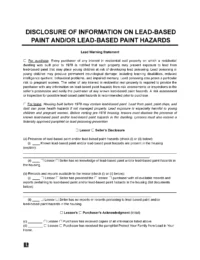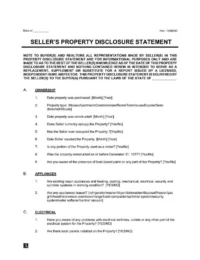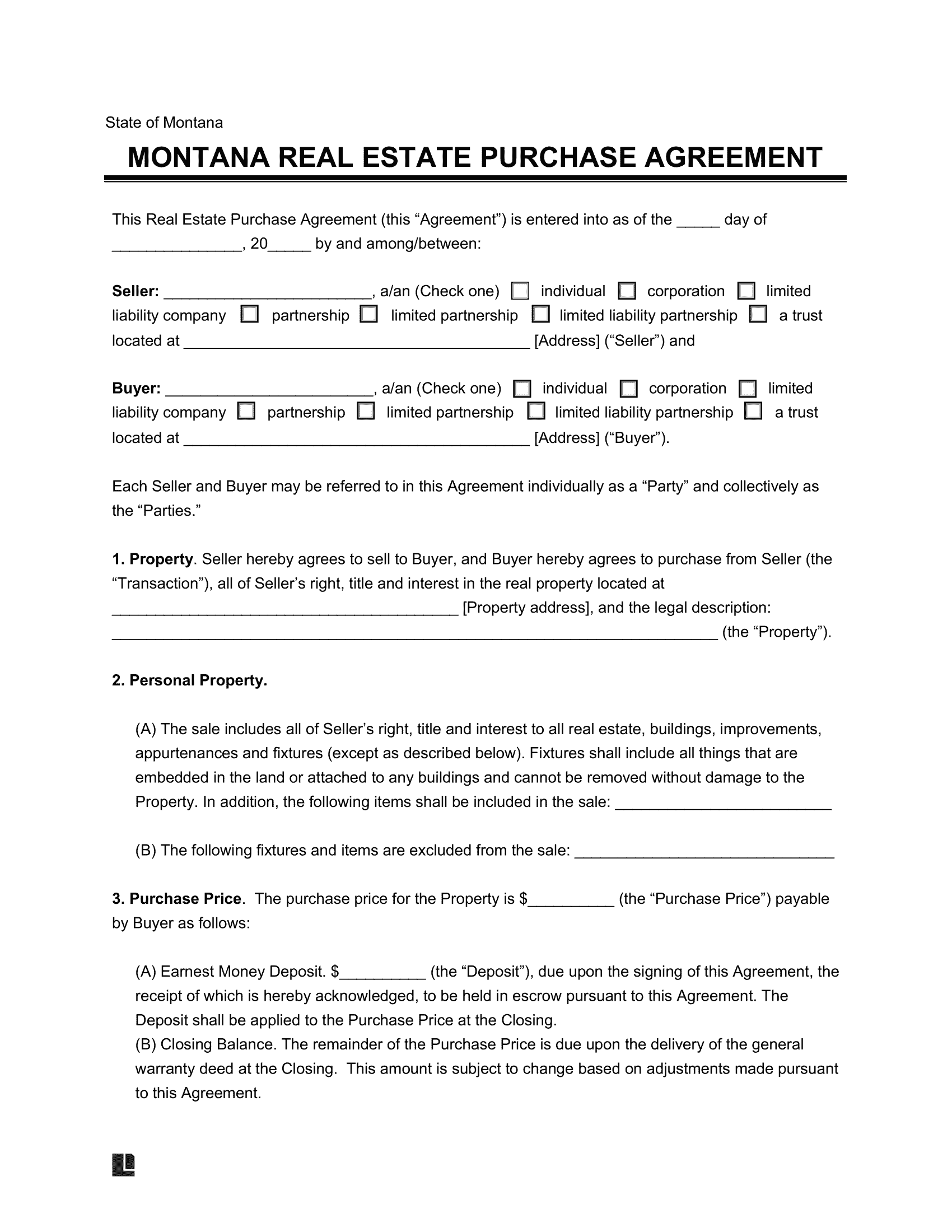A Montana residential real estate purchase agreement is a contract that outlines the terms of a property sale between a buyer and a seller. It includes the sale price, financing details, contingencies, and the closing date.
As required by § 70-20-101, all residential property sales in Montana must be documented in writing. The agreement becomes legally binding once both parties sign it, and it may undergo revisions until mutually agreed upon. Upon signing, the property’s ownership is legally transferred to the buyer.
State Laws
- Buyer Beware: Montana follows a “buyer beware” rule, meaning buyers are fully responsible for inspecting a property before purchase. [1]
- Agent’s Disclosure: If the property is sold by an agent, the agent must disclose any “adverse facts” to the buyer but is not required to perform inspections or verify the seller’s statements.
- Known Defects: Sellers cannot prevent buyers from discovering material defects and must provide state-mandated disclosures, including a list of material facts that could potentially deter buyers. [2]
Required Seller Disclosures
Lead-Based Paint Disclosure
For homes built before 1978, federal law (42 U.S. Code § 4852d) requires sellers to disclose any known lead hazards.
Property Disclosure Statement
Can be used by sellers or listing agents to to inform buyers of important property details, including any safety or value concerns.
Do Sellers in Montana Have to Disclose Property Defects?
No, in Montana, real estate sellers are not required to disclose material defects. In some states with “caveat emptor” (buyer beware) laws, the buyer is responsible for inspecting the property for defects. If the buyer does not perform a thorough inspection, they may not have legal recourse to undo the transaction.
Landlords are not obligated to disclose material defects. However, if the seller conceals latent defects or commits fraud through material misrepresentations, they may be held liable for damages or the transaction may be reversed.



